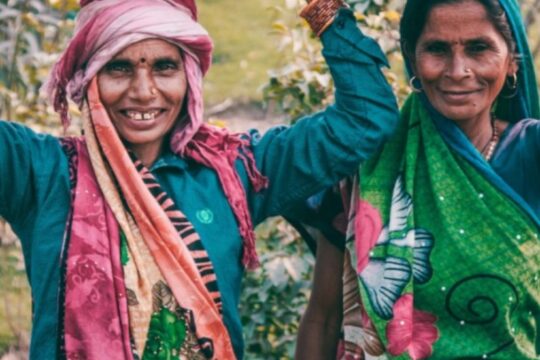Gap in Male-Female Literacy Rate
In India, despite the efforts to bridge the gender gap in education, there still exists a significant disparity between the literacy rates of men and women. According to the 2021 Census, the overall literacy rate in India is 77.7% with a male literacy rate of 84,7% and a female literacy rate of 70.3%. The gap between male and female Uteracy rates continues to persist and is particularly pronounced in rural areas, where only 68.5% of women are literate compared to 80.3% of men. This disparity in literacy rates results in women being denied the right to education and limits their ability to participate fully in the socio-economic development of the country
Role Stereotyping
I Role stereotyping is another significant concern affecting women in India. It refers to the notion that women are better suited to certain roles, such as being a homemaker, while men are better suited to others, such as being a breadwinner. This notion is deeply ingrained in Indian society and leads to women being denied opportunities in education, employment, and politics. Women are often expected to prioritize their domestic responsibilities over their professional and personal aspirations, leading to a lack of female representation in leadership positions
Differentiation in the Socialization Process
Differentiation in the socialization process is another issue affecting women in India. The process of socialization refers to the manner in which individuals learn and internalize societal norms and values. In India, girls are often socialized to prioritize domestic responsibilities and to accept submissive roles in society, while boys are socialized to pursue careers and to be assertive. This differentiation in the socialization process leads to gender-based disparities in educational and employment opportunities, perpetuating the gender gap.
Representation of Women in Legislature
Despite India being a democratic country, the representation of women in legislature remains low. According to the Inter-Parliamentary Union, India ranks 9th from the bottom in terms of women’s representation in parliament, with only 14.4% of parliamentary seats being occupied by women. The low representation of women in legislature means that their perspectives and issues are often underrepresented in decision-making processes, leading to policies that are skewed towards men’s interests.
Safety Concern
Safety is a major concern for women in India, with high rates of violence against women being reported across the country. According to the National Crime Records Bureau, a crime against a woman is reported every three minutes in India. This includes sexual violence, domestic violence, and trafficking. The situation is particularly dire for women from marginalized communities, who face multiple forms of discrimination and violence.
Period Poverty
Period poverty refers to the inability of women to access menstrual products and related information, leading to adverse health and socio-economic outcomes in india, period poverty is a significant concern, particularly for women from marginalized communities who cannot afford menstrual products and have limited access to toilets and clean water. The lack of information and stigma surrounding menstruation exacerbates the problem, leading to women being unable to manage their menstrual hygiene effectively and being unable to attend school or work.
In conclusion, women in India face a range of significant challenges, including the gap in male-female literacy rate, role stereotyping, differentiation in the socialization process, low representation in legislature, safety concerns, and period poverty. Addressing these issues is crucial for the socio-economic development of the country and for ensuring that women’s rights and equality are upheld.
How Saanchi Empowering Women
Saanchi, a social initiative aimed at empowering women and girls, can play a crucial role in addressing the above-mentioned concerns. By providing access to education and skill-building opportunities, Saanchi can help to close the gap in male-female literacy rates and break down gender stereotypes. The organization can also promote gender-sensitive socialization practices, by creating awareness and fostering inclusive environments.
Saanchi can also work towards addressing period poverty by providing access to menstrual products and creating awareness about menstrual health. This not only promotes the health and well-being of women, but also helps to break down the stigma surrounding menstruation,
Overall. Sanchi has the potential to make a significant impact in addressing the various concerns faced by women and girls. By empowering women and promoting
gender equality, Saanchi can help create a more inclusive and equitable society


